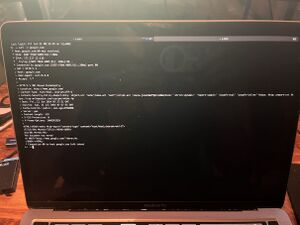Blog/2024-06-21/The Doorway Effect in Computers
The doorway effect is what happens when you walk into a room and you no longer remember why you went there.
I think it's actually quite common in software, which is sort of where I encounter it the most. The one with the most striking effect in recent memory has to be the full screen Windows menu. It looked like this and honestly every time I hit the Windows key I'd completely forget what I was looking for.
It didn't help that it had all these tiles moving every which way with animations on them.

Another experience is switching to a fullscreen iTerm2 window. If I was in the middle of something half the time I don't know what I switched to do.
To be honest, that last one is because MacOS seemingly reorders your full screen windows and workspaces at will. It completely messes with my spatial orientation of things in a way that Ubuntu's workspaces never did.
Anyway, all said, I'm against these full screen refresh scenarios when you're in the middle of something. Keeping that context available is probably good for your users!
